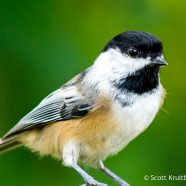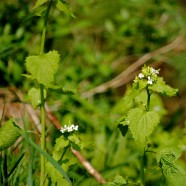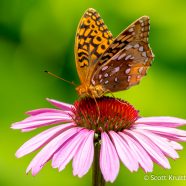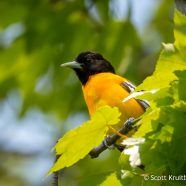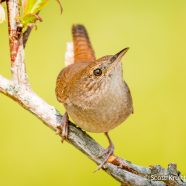Black-capped Chickadee
The Black-capped Chickadee (Poecile atricapillus) is as familiar a backyard resident as can be, but did you know these birds migrate, too? Well, some of them anyway, in a particular way. Young birds move south and irrupt during certain years based on the reproductive success of the summer and the local conditions. The best way to see this is finding a number of them in migratory hotspots in the autumn. If you are at an area such as a beach along the shore of Lake Erie where you typically find zero and suddenly see a flock of six or eight, there you go. I have seen up to 18 in a little flock...
Read MoreBackyard Botanical Bothers
New York Invasive Species Awareness Week – NYISAW Backyard Botanical Bothers Wednesday July 13th, 2016 – 11am – 1pm – 108 East Third Street, Jamestown What are those green things growing in your neighborhood, and what’s living on them? Are they native to this area or are they invasive pests? What does it matter? Meet us in front of RTPI’s new satellite office at 108 East Third Street, to learn a thing or two about ‘Backyard Botanical Bothers’ – specifically which plants and insects mean trouble for our ecosystem – and what you can do if you encounter them. RTPI’s Project Wild...
Read MoreGreat Spangled Fritillary & Eastern Purple Coneflower
I am finally seeing more butterfly abundance and diversity as we enter July, and I could not be happier about that! I photographed this appropriately named Great Spangled Fritillary (Speyeria cybele) nectaring on a fresh Eastern Purple Coneflower (Echinacea purpurea) during the morning of Independence Day. These pollinator plants are gorgeous and great for attracting beneficial insects to your yard. On Sunday, July 3, I was thrilled to finally see my first of the year Monarch butterflies. What species have you spotted recently? Have you planted anything in your garden to help pollinators...
Read MoreBaltimore Oriole
Those Baltimore Orioles (Icterus galbula) do love to stay high in the canopy of trees, and often enough all you can do is catch a quick glance of orange and black zipping by. If you know their call you probably end up hearing them far more than seeing them. This adult male did give me a minute to snap his shot as he came down to the mid-levels. He and his mate were busy feeding, and I presume they have a nest and eggs already on the way. If you have a pair in your neighborhood and would like an even better viewing opportunity then I suggest putting out half of an orange or two in your yard....
Read MoreHouse Wren
The incomparable and iconic House Wren (Troglodytes aedon) is a star of the screen with its cheery, chattering call reverberating through the background of countless TV shows and movies. It is one of our most geographically widespread songbirds with a huge range across the Americas. A true sign of spring, this May arrival gets right to making a nest in boxes or any other container in and around yards. I have always loved these friendly little birds, but this one definitely went the extra mile in allowing me a couple of close photos on a nest box and a blueberry bush. If you have a yard with...
Read More



